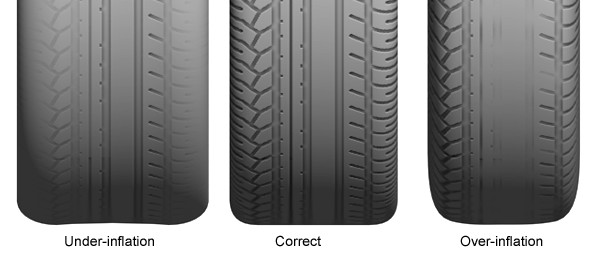The other day I was on a lesson and noticed that the vehicle in front of me had a very flat rear tyre. As we were at traffic lights, I was able to get out and notify the driver that of the situation. To my surprise, instead of pulling over and investigating, they just continued on their journey through city centre.
Remember that your tyres are the only point of contact between your vehicle and the road, and have do deal with the work of steering, braking and transmitting power. Therefore, it is important that we look after them.
Your tyres should have at least 1.6mm of tread (depth) across the central three quarters of the tyre’s width and around its entire circumference. There should be no cuts or bulges which could cause the tyre to fail.
A quick and easy way to see if your tyre tread exceed the minimum legal tread depth is to take the 20p test. Simply place a 20p coin into the main tread grooves of your tyre. If the outer band of the 20p coin is obscured when it is inserted, then your tread is above the legal limit.
If the outer band of the coin is visible, then your tyres may be illegal. Remember to check your spare.
If below the legal limit, you could be liable to a maximum of three penalty points on your licence and a fine of up to £2,500 – PER TYRE!
A tyre’s tread blocks move water on a wet surface, helping grip. When these become worn down to the wear ‘bars’ or indicators, all the soft, grippy rubber has been abraded and only the harder carcass of the tyre remains. As a result, grip in dry conditions is lessened, and with no tread blocks to cut through standing water and remove it from the rubber-road interaction, wet grip is seriously diminished.
This can lead to aquaplaning. When the tyres can’t move water, a film of moisture builds up between the rubber and the road meaning the tyre isn’t actually in contact with the tarmac. Steering, braking and acceleration inputs are almost useless until grip is regained. The steering will go light.
It is also important to check that the tyre pressures are as in accordance with the Manufacturer’s recommendation. There are different recommendations depending on how much weight you are carrying.
Air pressure inside the tyre inflates the carcass and pushes the tread blocks out away from the centre. Too little pressure and these tread blocks close over and don’t displace water effectively – it also decreases efficiency – too much and your car’s ride can be too bouncy.
In conclusion, keep an eye on your tyres. Check them regularly, especially before long journeys.
Be safe.
